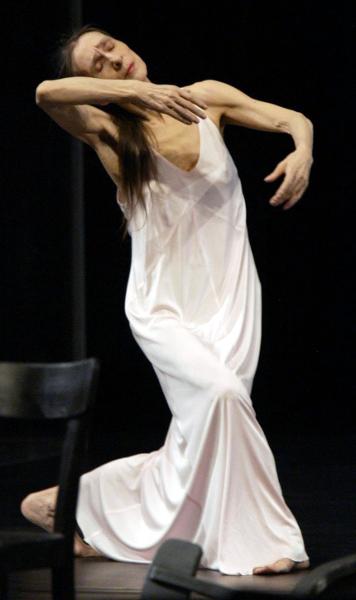Source

Source: picture-alliance / dpa (c) dpa – Fotoreport
This photograph shows choreographer and dancer Pina Bausch (1940-2009) during a dress rehearsal of “Café Müller” (1978) in Bochum’s Centennial Hall on May 15, 2003. A signature work, this haunting, emotionally-charged piece was based on Bausch’s childhood memories of a café run by her parents. Bausch studied with the pioneering German Expressionist dancer Kurt Jooss (1901-1979), and her artistic roots can be found in the Ausdruckstanz [Expressionist dance] of the interwar years. Her attention to emotional and psychic states and her interest in dissolving the barriers between theater and dance derive from this tradition. Bausch is largely credited with having created the new hybrid form of “Tanztheater” (“dance theater”), a genre that incorporates elements of dance and theatrical stage performance, combining the spoken word with movement and elaborate scenic effects. In 1973, she became director and choreographer of the newly founded Tanztheater Wuppertal. She held this position until her death in 2009. Under her direction, the Tanztheater Wuppertal became one of the most important dance companies in the world. Bausch’s reach also extended well beyond the world of dance and into the realm of popular culture: she appeared in Federico Fellini’s 1983 film E la nave va [And the Ship Sails On], and portions of “Café Müller” and “Masurca Fogo” are featured in Pedro Almodóvar’s 2002 film Hable con Ella (Talk to Her).

Source: picture-alliance / dpa (c) dpa – Fotoreport